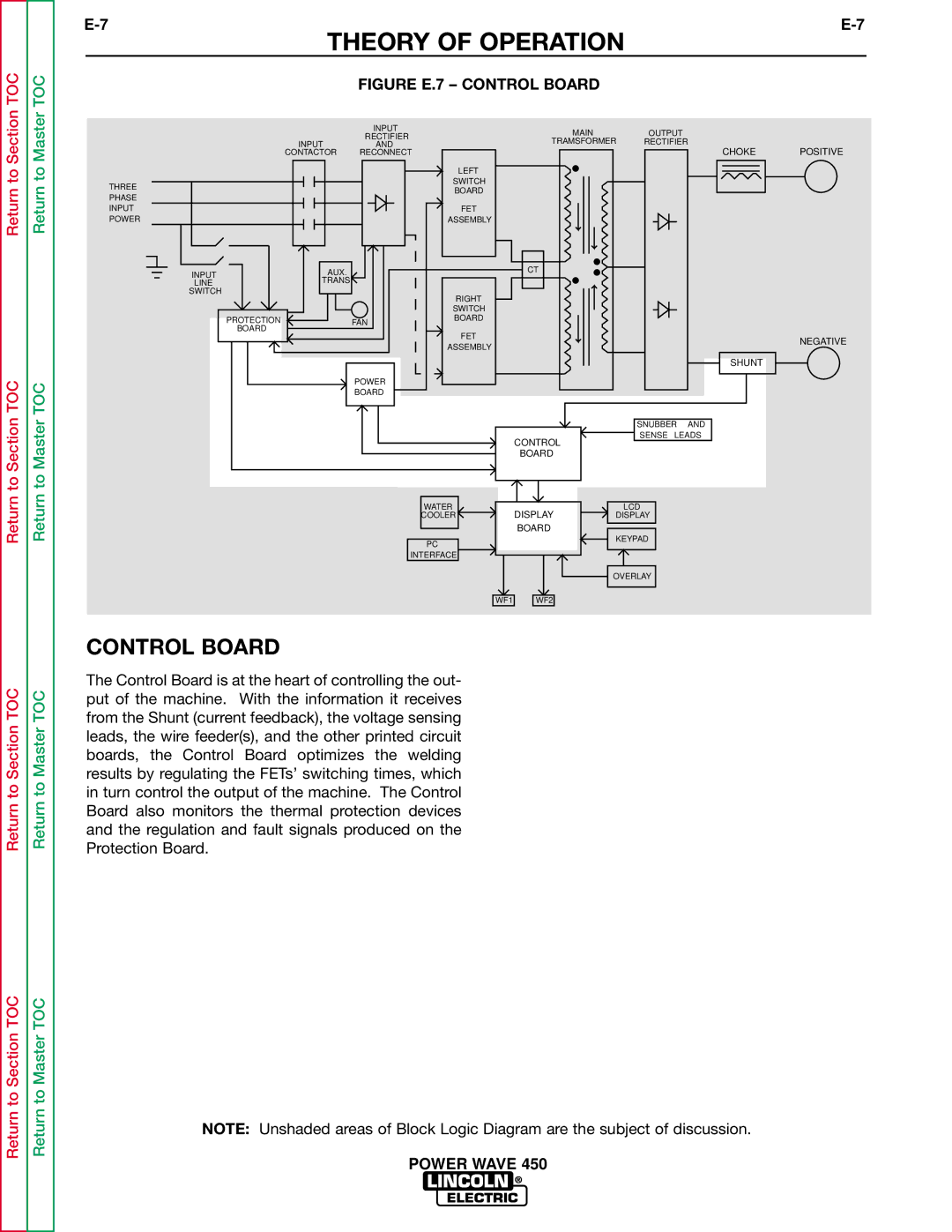
to Section TOC
to Master TOC
|
| |||
| THEORY OF OPERATION |
| ||
|
| FIGURE E.7 – CONTROL BOARD |
| |
|
| INPUT | MAIN | OUTPUT |
|
| RECTIFIER | ||
|
| TRAMSFORMER | RECTIFIER | |
| INPUT | AND | ||
| CONTACTOR | RECONNECT |
| CHOKE POSITIVE |
|
|
| LEFT |
|
| THREE |
| SWITCH |
|
|
| BOARD |
| |
| PHASE |
|
| |
|
|
|
| |
Return
Return to Section TOC
Return
Return to Master TOC
INPUT |
| FET |
POWER |
| ASSEMBLY |
INPUT | AUX. | CT |
TRANS |
| |
LINE |
| |
SWITCH |
| RIGHT |
|
| |
|
| SWITCH |
PROTECTION | FAN | BOARD |
BOARD |
|
|
FET
ASSEMBLY
POWER
BOARD
CONTROL
BOARD
WATER
COOLERDISPLAY
BOARD
PC
INTERFACE
NEGATIVE
SHUNT
SNUBBER AND
SENSE LEADS
LCD
DISPLAY
KEYPAD
Return to Section TOC
Return to Section TOC
Return to Master TOC
Return to Master TOC
OVERLAY
WF1 WF2
CONTROL BOARD
The Control Board is at the heart of controlling the out- put of the machine. With the information it receives from the Shunt (current feedback), the voltage sensing leads, the wire feeder(s), and the other printed circuit boards, the Control Board optimizes the welding results by regulating the FETs’ switching times, which in turn control the output of the machine. The Control Board also monitors the thermal protection devices and the regulation and fault signals produced on the Protection Board.
NOTE: Unshaded areas of Block Logic Diagram are the subject of discussion.
